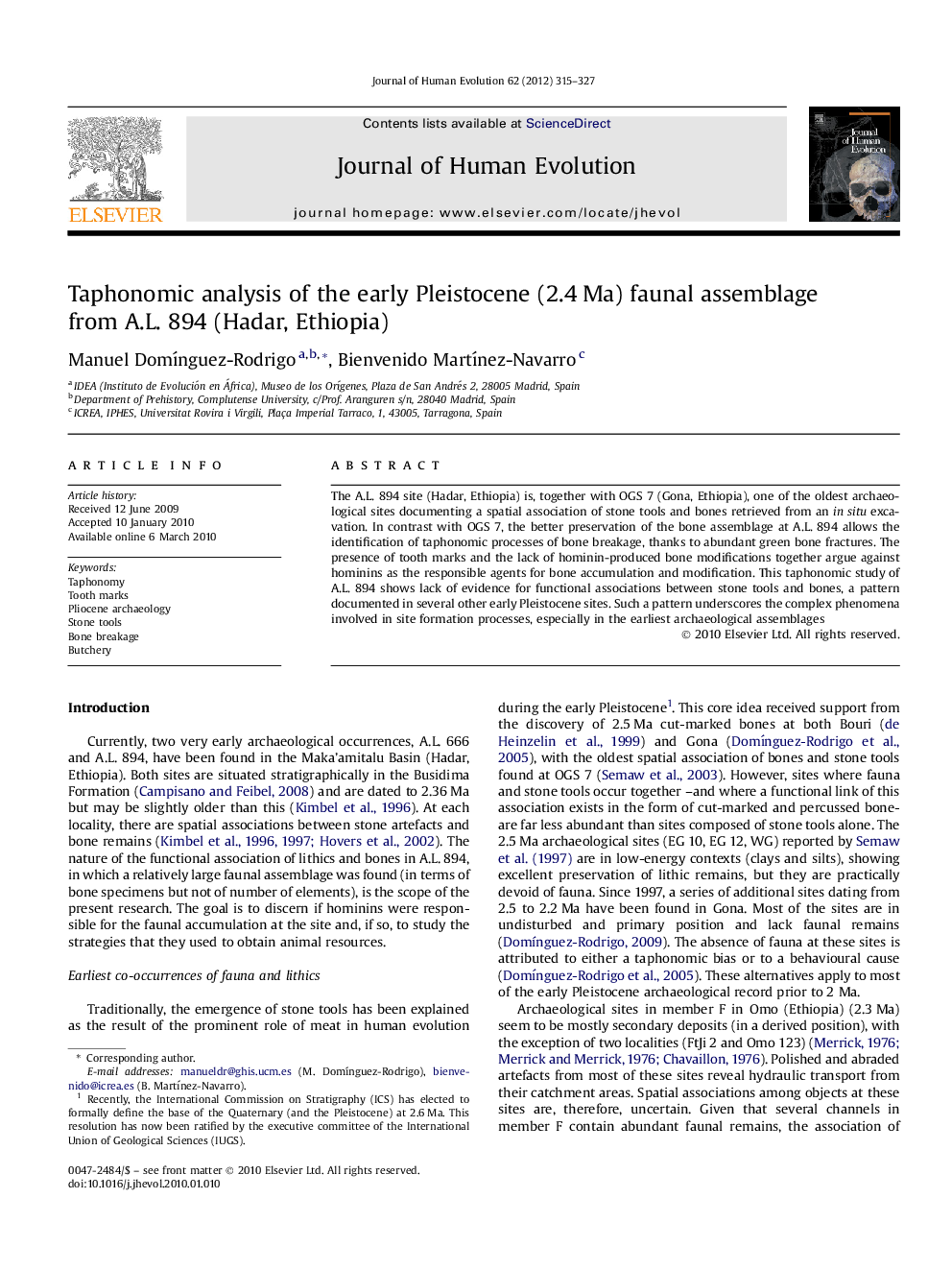| Article ID | Journal | Published Year | Pages | File Type |
|---|---|---|---|---|
| 6389256 | Journal of Human Evolution | 2012 | 13 Pages |
The A.L. 894 site (Hadar, Ethiopia) is, together with OGS 7 (Gona, Ethiopia), one of the oldest archaeological sites documenting a spatial association of stone tools and bones retrieved from an in situ excavation. In contrast with OGS 7, the better preservation of the bone assemblage at A.L. 894 allows the identification of taphonomic processes of bone breakage, thanks to abundant green bone fractures. The presence of tooth marks and the lack of hominin-produced bone modifications together argue against hominins as the responsible agents for bone accumulation and modification. This taphonomic study of A.L. 894 shows lack of evidence for functional associations between stone tools and bones, a pattern documented in several other early Pleistocene sites. Such a pattern underscores the complex phenomena involved in site formation processes, especially in the earliest archaeological assemblages
